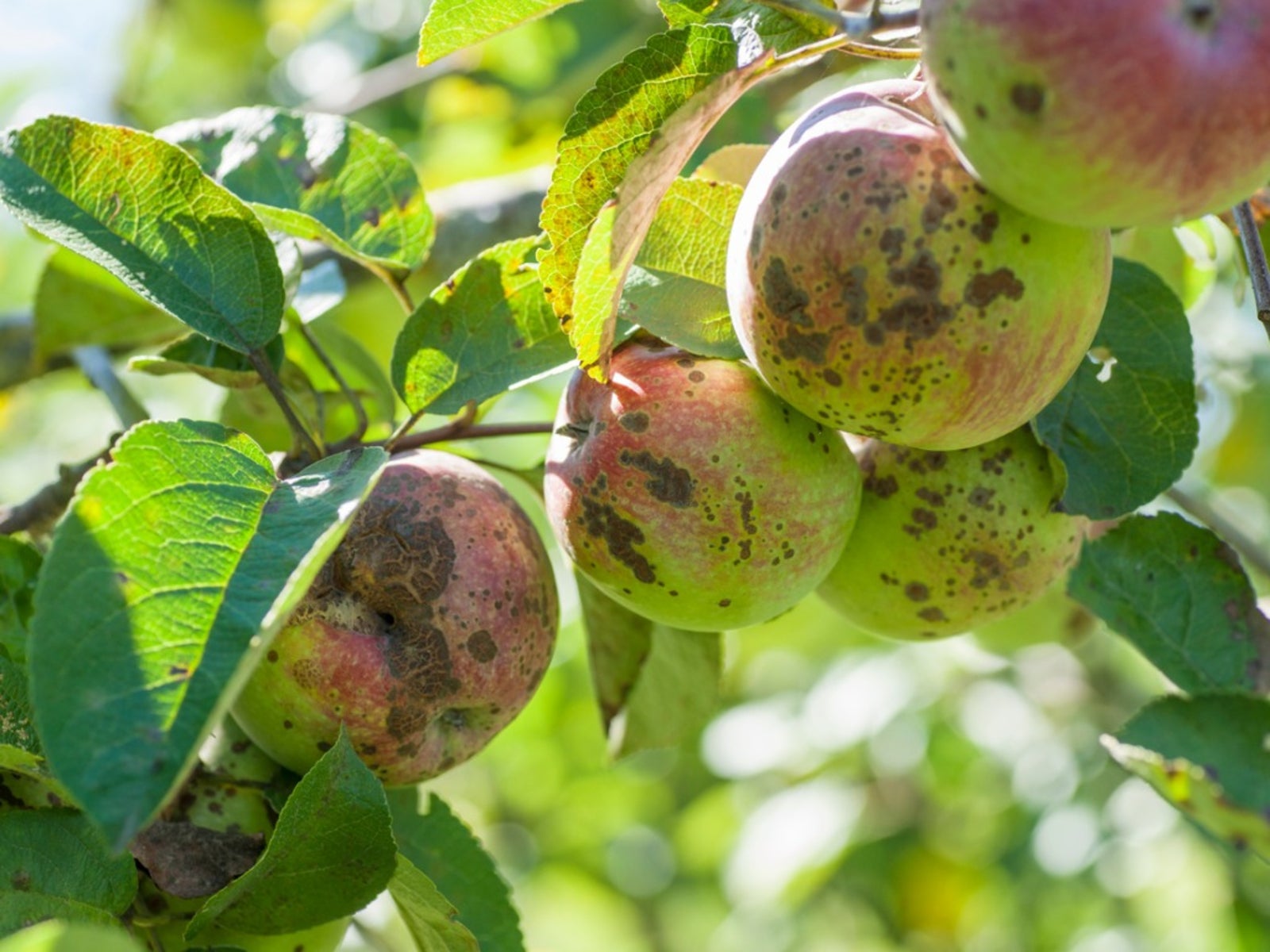Information On Common Diseases Of Apple Trees


Apple trees are perhaps one of the most popular fruit trees to grow in the home garden, but are among the most prone to disease and problems as well. But, if you are aware of the most common growing problems, you can take steps to keep them away from your apple tree and the fruit, which means you can enjoy more and better apples from your trees.
Common Diseases of Apple Trees
Apple Scab - Apple scab is an apple tree disease that leaves warty, brown bumps on the leaves and fruit. It is a fungus that primarily affects trees in areas that have high humidity. Powdery Mildew - While powdery mildew affects a great many plants, and on apple trees it can decrease the number of flowers and fruit and cause stunted growth and blemished fruit. Powdery mildew on apples will look like a velvety covering on leaves and branches. It can affect any apple variety, but some varieties are more susceptible than others. Black Rot - Black rot apple disease can appear in one or a combination of three different forms: black fruit rot, frogeye leaf spot, and black rot limb canker.
- Black fruit rot - This form of black rot is a blossom end rot, similar to that found in tomatoes. The blossom end of the fruit will turn brown and this brown spot will spread across the whole fruit. Once the whole fruit turns brown, it will then turn black. The fruit stays firm while this occurs.
- Frogeye leaf spot - This form of black rot will appear just around the time the blossoms on the apple tree start to fade. It will appear on the leaves and will be grey or light brown spots with a purple edge.
- Black rot limb canker - These will appear as depressions on the limbs. As the canker becomes larger, the bark on the center of the canker will begin to peel away. If left untreated, the canker can completely girdle the tree and kill it.
Apple Rusts - The rust that affects apple trees is commonly called cedar apple rust, but it can be found in one of three different forms of rust fungus. These apple rusts are cedar-apple rust, cedar-hawthorn rust and cedar-quince rust. Cedar-apple rust is the most common. Rust will commonly appear as yellow-orange spots on the leaves, branches and fruit of the apple tree. Collar Rot - Collar rot is a particularly bad apple tree problem. Initially, it will cause stunted or delayed growth and blossoming, yellowing leaves and leaf drop. Eventually a canker (dying area) will appear at the base of the tree, girdling and killing the tree. Sooty Blotch - Sooty blotch is a non-lethal but blemishing fungus that affects the fruit of an apple tree. This apple tree disease appears as dusty black or grey spots on the fruit of the tree. While it looks unsightly, the fruit is still edible. Flyspeck - Like sooty blotch, flyspeck also does not harm the apple tree and only causes cosmetic damage to the fruit. Flyspeck will appear as groups of small black dots on the fruit of the tree. Fire Blight - One of the more devastating of the apple tree diseases, fire blight is a bacterial disease that affects all parts of the tree and can lead to death of the tree. Symptoms of fire blight include die back of branches, leaves and blossoms and depressed areas on the bark that will be discolored and are, in fact, areas of the branches that are dying.
Sign up for the Gardening Know How newsletter today and receive a free copy of our e-book "How to Grow Delicious Tomatoes".

Heather Rhoades founded Gardening Know How in 2007. She holds degrees from Cleveland State University and Northern Kentucky University. She is an avid gardener with a passion for community, and is a recipient of the Master Gardeners of Ohio Lifetime Achievement Award.